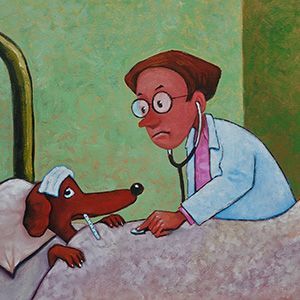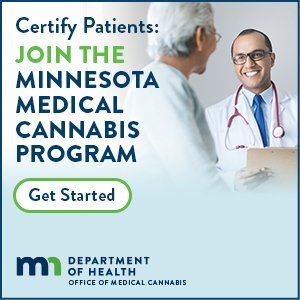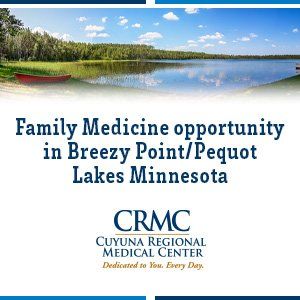middle-aged patient complains that he still hasn’t recovered from COVID-19 after several weeks. In addition to persistent digestive issues, he is sidelined by extreme fatigue after minimal activity, whereas last year he was running half-marathons.
cover story one
Long COVID
Facing a shadow pandemic
By KATE MURRAY, MPH, AND RUTH LYNFIELD, MD
Another presents with dizziness and a racing heart upon standing, frequent migraines, and issues with memory and concentration so severe that she has lost her teaching job. She can’t identify any significant health events other than having mild COVID-19 four months ago. Her blood tests are unremarkable.
These are just two examples of the many faces of long COVID—symptoms that people experience four or more weeks after their acute COVID-19 infection.
Health care providers worldwide are grappling with this puzzling group of conditions, some without recognizing long COVID. Clues around potential causes, diagnostics and treatments are slowly emerging, but in the interim, providers and patients need guidance and support.
Groups like the Long COVID program at the Minnesota Department of Health (MDH) and the MDH Long COVID Guiding Council of clinicians are working to fill those gaps by sharing and disseminating new evidence and best practices as they emerge and encouraging health systems to implement these best practices. Similar multidisciplinary collaboratives have convened in other states, but a local effort can better assess and meet the needs of Minnesota’s unique health systems and communities.
Symptoms of long COVID vary from person to person.
What We Know and What We’re Still Learning
Long COVID—also called long-haul COVID, post-COVID conditions, post-acute sequelae of COVID-19 and chronic COVID-19—has become a shadow pandemic in the wake of COVID-19. Between 5-30 percent of people who have had COVID-19 will experience long COVID. Prevalence is hard to measure because of varying definitions, heterogeneity of presentation and duration, overlap with other conditions, lack of identification and likely underdiagnosis. However, long COVID is affecting people across the lifespan, from children to older adults.
SARS-CoV-2—the virus that causes COVID-19—was initially framed as a respiratory pathogen, but has been shown to directly or indirectly impact nearly every organ system of the body. Theoretical mechanisms include that the virus damages the lining of small blood vessels, causes micro-clots, persists in viral reservoirs, reactivates other latent viruses, spurs ongoing inflammation, triggers autoimmune-like conditions and other possible pathological processes we’re only beginning to grasp. There may be subtypes or multiple diseases grouped under the umbrella term of long COVID.
The symptoms of long COVID vary from person to person. They can range in severity from mildly annoying to outright debilitating, with extreme fatigue, dizziness, cognitive dysfunction (“brain fog”), shortness of breath and other symptoms intense enough to prompt a visit to the emergency room. In a subset of cases, long COVID can seriously disrupt work, school, mental health, family life and daily activities.
Onset and duration of symptoms can be highly variable. They might persist from the acute infection or they can manifest some weeks after apparent recovery, presenting as a new chronic condition. For others, symptoms are more episodic, improving for a time only to re-emerge after physical or mental exertion, stress, illness or other “triggers.” People with severe long COVID may meet diagnosis criteria for conditions like dysautonomia, postural orthostatic tachycardia syndrome (POTS) or myalgic encephalomyelitis, also known as chronic fatigue syndrome or ME/CFS. Because the symptoms and timelines are so varied, there is not yet an agreed-upon clinical case definition for long COVID, and existing definitions from the Centers for Disease Control and Prevention (CDC) and World Health Organization are purposely broad.
Although severe illness and certain pre-existing conditions increase the risk of long-term complications after acute COVID-19, many people with long COVID were previously healthy and/or had only a mild acute infection. Vaccination appears to reduce the chances of developing long COVID, but it may still follow breakthrough infections. Similarly, milder variants and increased population immunity have lowered but not eliminated the occurrence of long-term symptoms. While use of certain medications during the acute infection are showing promise for reducing long COVID, more study is needed. Just as COVID-19 is not going away, long COVID is also unlikely to go away.
Beyond the obvious impacts on the health and well-being of individuals, the burden of long COVID has implications for the health care system, the workforce and the economy. It’s estimated that up to four million Americans have left the workforce because of long COVID so far, with many yet to return. Associated job loss and reduced hours may account for 15 percent of the labor shortage. Medical costs for patients can soar as they seek tests and specialists not covered by insurance.
The far-reaching toll of long COVID also appears to follow the disproportionate impacts that COVID-19 has had across populations and communities, further exacerbating the health inequities that predated the pandemic. Rural and low-income areas, Minnesotans of color, Native Americans, the LGBTQ community and people with disabilities and chronic conditions will bear the largest burden. People in higher-risk occupations during the height of the pandemic, such as health care, education, service industries and other jobs that required in-person work have been shown to experience higher rates of long COVID as well.
Likely Underdiagnosed
Given the myriad presentations of long COVID and lack of standardized definitions or protocols, it’s not surprising that many providers have struggled to identify, diagnose and manage post-COVID conditions—even if they’re aware of them. The ICD-10 code (U09.9: Post-COVID-19 condition, unspecified) scarcely shows up in medical records, despite the likely high prevalence.
A lack of public awareness compounds the problem: people with long COVID might recognize that they have lost some degree of health or function, but fail to make the connection to a recent infection with COVID-19. The complexity, uncertainty and evolving knowledge around post-COVID conditions make communications and messaging around long COVID a challenge for both health care and public health personnel.
Stigma may also play a role. Patients with similar post-infection conditions like ME/CFS and chronic Lyme disease have been dismissed for decades, and long COVID may be written off as simply anxiety or a deficit in healthy living habits. While studies have indicated that many patients with long COVID experienced increased anxiety and depression, the impacts on mental health often stem from the loss of normalcy, stability and identity felt by those who are facing a new chronic illness or disability.
The dearth of sufficient diagnostic tools can perpetuate this dismissal, as most routine tests—as well as expensive, specialized imaging—may fail to show any abnormalities. Many providers order tests to exclude or understand overlapping chronic conditions, but stop short of making a long COVID diagnosis.
Potential Treatments, Management and Support
While there is not yet a cure for long COVID, symptoms can often be reduced or managed with help from a health care team. Care guidance varies and continues to evolve, but many patients make progress with different combinations of physical and occupational therapies, medications, coordinated care and strict pacing regimens. Rehabilitation specialists may be able to apply treatments and therapies for known conditions that are similar to or overlap with long COVID, such as POTS, mast cell activation syndrome, and traumatic brain injury. The general approach is often to target the most pervasive symptoms and focus on regain of function or adaptation to a “new normal.” Mental health professionals can assist patients in psychosocial adaptation. Referral to social services may help ease the stress of lost wages and alleviate concerns around household bills and food insecurity.
Peer support, such as online patient groups, can be a literal lifeline, although unmoderated forums can also harbor misinformation and suicidal ideation. Still, validation and solidarity can be very helpful, particularly for people with long COVID who have faced stigma, loss of employment, mounting medical bills, new disability or strain on relationships. Caregivers may also benefit from peer support. A handful of health systems have launched their own forums and group therapies, which could serve as a model for others.
There is not yet a cure for long COVID.
Many patients get better on their own after several months, while others get worse, progressing toward disability. We are still learning why. Even people who gradually recover from long COVID may need support for several months, such as assistance with daily tasks, social services or accommodations at work or school. As of July 2021, long COVID and post-COVID conditions can qualify as a disability under the Americans with Disabilities Act (ADA). Documentation from providers is crucial for connecting long COVID patients to the accommodations and support they need to stay employed, improve recovery and live their fullest life.
Efforts Underway, but More Work Needed
Researchers in Minnesota and around the world are investigating the potential etiologies, subtypes, treatments and prevention for post-COVID conditions. The White House has pledged an “accelerated, whole-of-government effort” to address long COVID, and in 2021, the National Institutes of Health (NIH) launched a billion-dollar initiative to study risk factors and run clinical trials. Yet progress is slow, and awareness and resources are lacking. The NIH trials have struggled with mistrust and lack of participation from patients.
Meanwhile, many clinics and hospitals have set up their own approaches to serving long COVID patients. Some have identified a small team to coordinate care and services, while others have stood up comprehensive long COVID specialty clinics. Various interim care guidance has been published.
However, the lack of consensus around diagnosis and treatment, variation in awareness and divergent resources available across providers can trickle down to the patient experience. Specialty clinics may not be accessible, and rigorous schedules of follow-up appointments impractical. For those without insurance or a regular provider, it may be nearly impossible to find a clinician they trust who can identify and provide care for long COVID, particularly in the space of a primary care visit.
Recognizing these disparities, MDH began efforts to understand how and where patients are receiving care for long COVID across Minnesota. Clinicians have expressed that there is little communication among providers who see long COVID patients and that a coordinated learning network would increase access to care and the quality of the care that is provided.
The Long COVID Guiding Council of Minnesota Clinicians
MDH began recruiting Guiding Council members in late 2022, in partnership with Stratis Health and consultants from the former Institute for Clinical Systems Improvement (ICSI). We recognized the importance of bringing a small but diverse group of clinicians to the table with representation from primary and specialty care. In addition to experience with long COVID patients, areas of expertise include physical medicine and rehabilitation, infectious disease, pulmonology, traumatic brain injury, post-viral illness, rural health care, pediatrics, geriatrics and long-term care. It was also crucial to include not just the big health systems with specialty clinics and research teams, but also Federally Qualified Health Centers and community clinics, rural hospital systems, the Veterans Administration and many others. We are also gathering input from people with long COVID, caregivers, support services, community leaders and other health care practitioners.
The Guiding Council began convening in January 2023 and will meet monthly through at least early summer. Participants are enthusiastic about sustaining this learning network for many months or years to come, as guidance and treatments evolve. This infrastructure can aid in rapid dissemination of new evidence and best practices, as well as support implementation in different health systems serving diverse communities across the state. The group has discussed existing definitions and guidance, tools and education for providers and systems-level approaches to improving care and access. Outcomes will be summarized and posted on the MDH website at a future date at this site: www.health.state.mn.us/diseases/longcovid/providers.html.
To better understand the lasting effects of COVID-19 on the lives of Minnesotans, MDH is also conducting a statewide phone survey over the next few months among people who have had laboratory-confirmed COVID-19. Results will be used to identify and guide future activities to address long COVID. We have prioritized partnerships throughout our work, engaging with communities, employers, schools, local public health, other state agencies and national workgroups. Currently the MDH long COVID program is funded by a CDC COVID and Health Equity grant grant through June of 2023. A proposal to extend MDH’s long COVID work has been recommended by Governor Tim Walz and Lieutenant Governor Peggy Flanagan. The proposal builds on the foundation and partnerships MDH has fostered since 2020 and provides a sustained and equitable public health response to long COVID throughout Minnesota. It also includes resources for vital capacity-building for communities and local public health, enabling more tailored messaging and approaches and bolstering patient-led support.
A Call to Action
Long COVID will continue to challenge patients and providers for years to come. As the urgency around COVID-19 recedes, we must acknowledge that while COVID-19 may be a limited respiratory illness for many, it can also result in unpredictable, long-term, life-altering symptoms for others. The impacts on health and well-being, communities, health care systems, the workforce and the economy cannot be ignored.
There is also hope: new clues and success stories are emerging every day. As knowledge about long COVID grows, health care practitioners can educate themselves and their patients. They can explore what their system or clinic is doing to address long COVID, watch for evolving care guidance and share patient resources. And when confronted with a patient struggling to recover from a COVID-19 infection, they can consider: Could this be long COVID?
Guidance for providers, resources for patients and much more can be found at www.health.mn.gov/longcovid. If you would like to provide input about your experience with long COVID in the clinical setting, please fill out the brief survey at https://survey.alchemer.com/s3/7147319/Long-COVID-Survey.
Kate Murray, MPH, is the program manager for Long COVID and Post-COVID Conditions at the Minnesota Department of Health. She also holds a Master of Public Health degree in administration and policy.
Ruth Lynfield, MD, is the state epidemiologist and medical director for the Minnesota Department of Health, as well as a board-certified pediatric infectious disease specialist.
MORE STORIES IN THIS ISSUE
cover story one
Long COVID: Facing a shadow pandemic
By KATE MURRAY, MPH, AND RUTH LYNFIELD, MD
cover story two
Privatized Medicaid and MinnesotaCare: Bills could lead to review of zombie programs




















